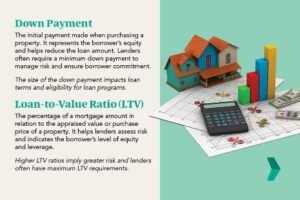Crafting Your Mortgage Mastery 2023
Buying a first home is an exciting milestone that represents a big step toward financial independence and stability. While it may appear intimidating at first, with strange jargon and convoluted procedures, we can navigate with confidence and ease if we break the process down into simple components. Whether you’re looking for a modest townhouse or a huge suburban property, this blog will serve as a complete guide to buying your first home and establishing a solid financial future.
The Foundations of Home Purchase
Before diving into the home-buying process, it’s critical to understand the fundamental principles and basic vocabulary that will serve as the foundation for your trip. Let’s go over some key terminology that you’ll come across during this process and explain what they mean.
First and foremost, consider the down payment:
This is the money you pay up front when buying a house. It’s usually estimated as a percentage of the entire purchase price and serves as proof of your dedication to the property. A greater down payment, in general, signifies a lower loan-to-value ratio, which means you are borrowing a lesser percentage of the overall purchase price. This lower ratio may result in more advantageous loan terms, such as lower interest rates and the elimination of the need for private mortgage insurance (PMI).
The proportion necessary for a down payment varies depending on the type of loan, your financial status, and the lender’s criteria; nonetheless, down payments are typically between 3% and 20% of the purchase price. For example, if you’re purchasing a $300,000 home and the down payment is 10%, you’ll need to pay $30,000 up front.
Saving for a down payment is sometimes one of the most difficult obstacles for first-time homeowners. A budget and dedicating a percentage of your salary to a down payment fund may be beneficial. Furthermore, looking into programs and initiatives accessible to first-time buyers, such as government-assisted down payment assistance programs or grants, will help you achieve your homeownership aspirations.

Understanding the Purchase Agreement’s Intricacies
When you’ve located the ideal property, it’s time to make an offer. Understanding the components of the purchase agreement is critical since it specifies the terms and circumstances of the transaction.
A contingency is the most important part of a purchase agreement; these are criteria that must be met for the sale to occur. house inspections, appraisals, financing, and the selling of your current house are all common contingencies. These clauses protect your interests and allow you to negotiate repairs or alterations if problems develop during the inspection process.
More on:

